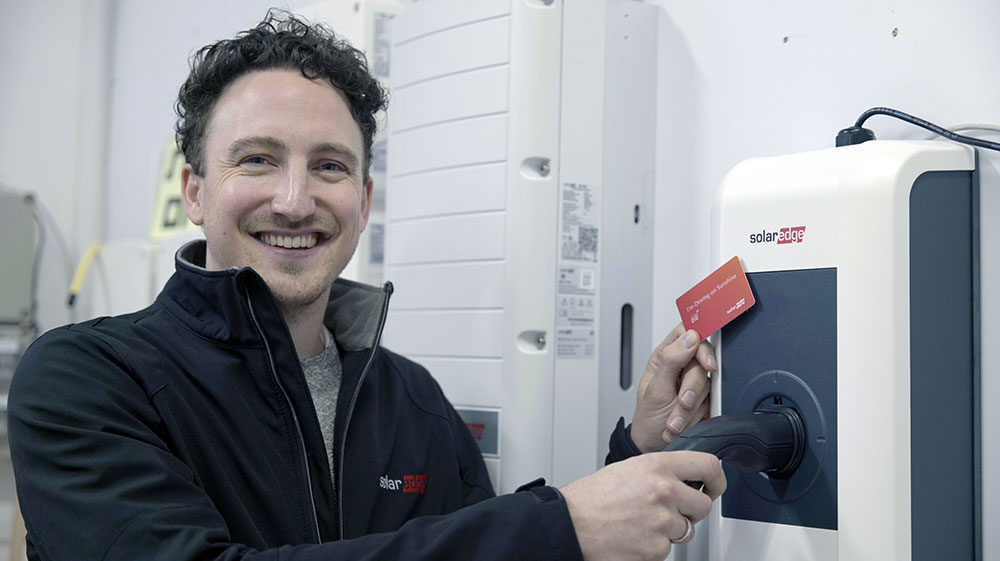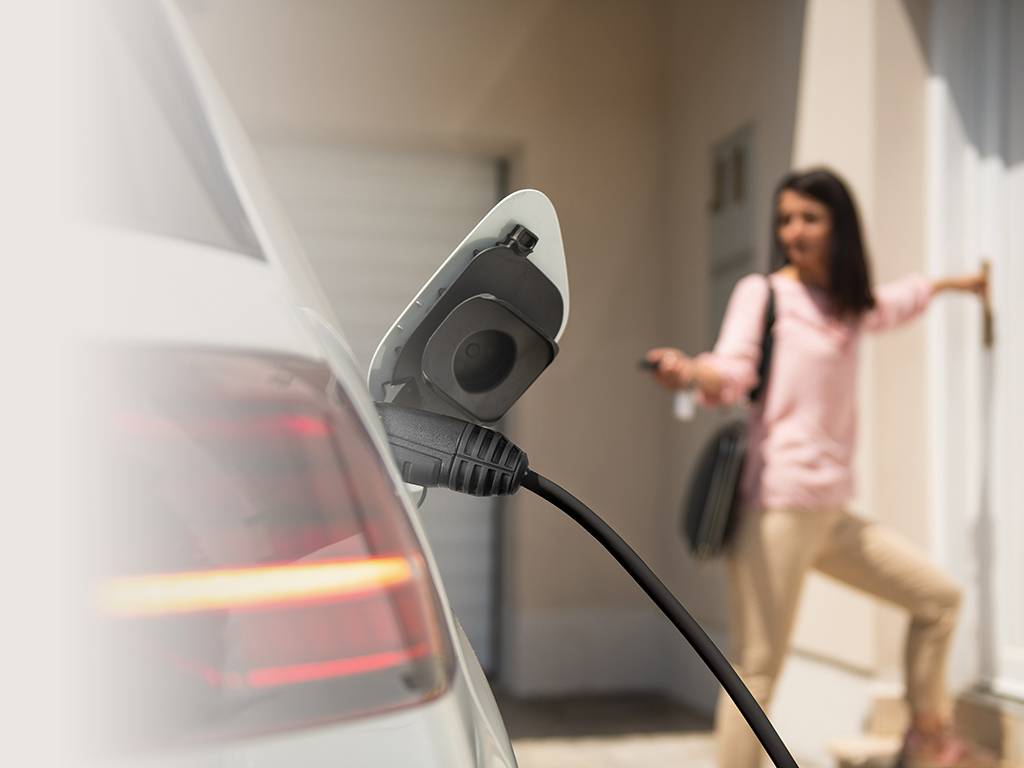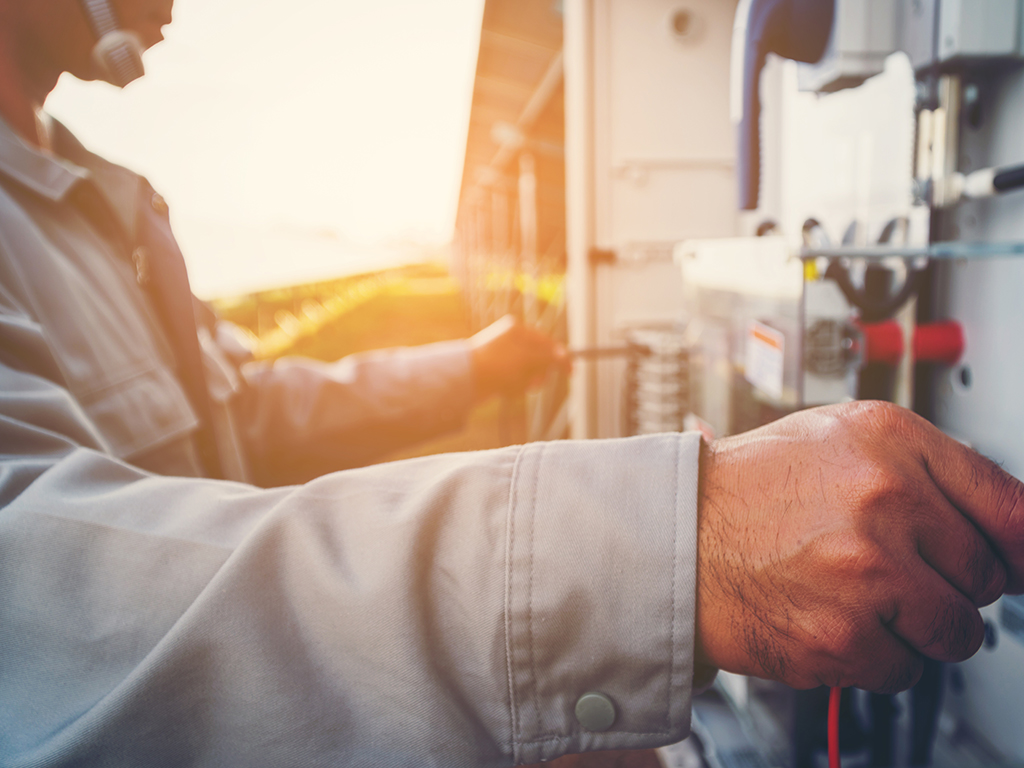How Home Electric Car Chargers Impact PV Profitability and the Grid
Read time: 9 minutes
We interviewed our very own “Mr. Solar”—Frank Bakker—an electrical engineer and Smart Energy Product Manager at SolarEdge, who shared some fascinating insights into electric car charger trends, how they’re affecting homeowners and grids, and some latest updates on the new SolarEdge EV Charger.

Will home EV charging make people more inclined towards buying an electric car?
People are buying electric cars for different reasons. Many wish to avoid the soaring gas prices, with a liter of fuel in some places in Europe reaching as much as 2 Euros. Others will purchase an EV to lead a more sustainable lifestyle, or maybe just because it's fun. A large part of this growing trend though is being driven by regulations. By 2030, in Belgium1 and in Sweden2 you will no longer be able to buy combustion engine cars, which will eventually become the case in many other countries.3
Today, people are realizing the huge benefits of using a home electric car charger that’s connected to their PV system. You can fill up your EV from home-produced solar, so you’re not only charging for less, but your car battery always stays full and ready to go, without having to drive to a gas station to refuel. You’re also charging more sustainably and saving more with EV charger subsidies and green tax credits.
What should one consider before buying a home EV charger?
First, you should check with a certified solar installer that your home infrastructure has the minimal capacity to support an EV charger. Also, keep in mind that in most countries, power companies bill you according to the size of your electricity connection. So, depending on the region, if you need to expand the capacity of your home’s connection to enable EV charging, you could be charged extra on your monthly energy bill. This is in addition to your electricity’s base price per kWh, and the monthly maintenance fee (also in kWh) for transporting the energy over the grid.
How is the growing popularity of EVs affecting home electricity usage?
While energy consumption does vary among drivers and car models, EV charging commonly amounts to a pretty hefty expense. Charging your typical 50-100 kWh EV battery for average usage could take up as much as 50% of your home’s energy consumption, and according to BCG can “lead to an increase of 20% to 50% in megawatt hours of electricity consumed by the average household “.4
The increase in EV charging is creating bigger demand peaks on our grids. Power companies, to ensure grid balance during peak loads, are trying to curb consumption by hiking up peak-demand rates. Countries too are turning to utility consumers to try to balance the grid. Many regions are moving away from net metering, where for every kWh of solar you inject into the grid you get a kWh’s worth of credit, so compensation is equal to electricity rates. Instead, feed-in tariff schemes are being adopted, which means that PV system owners receive monetary credit for the energy’s value. But, this value is dynamic and could be either higher or lower than the retail cost. In Belgium, for example, system owners are receiving lower compensation fees for every kWh of solar they inject into the grid, and a new capacity tariff planned for this summer aimed “to encourage people to spread their consumption, is determined on the basis of their average monthly peak capacity term”.5
Such regulations are prompting homeowners worldwide to search for ways to optimize their energy consumption. Some are changing their habits and charging their cars more during the day at lower tariffs. Others might start charging their battery, preheating their water heater or running the dishwasher in the daytime.
How does charging with the SolarEdge EV Charger help solar system owners increase their savings?
When people come home at the end of the day they usually plug in their car and charge it overnight. Since everybody else is doing the same thing, we’re all inevitably paying higher peak electricity rates approximately from 4 PM to 11 PM in many regions. The problem is that during those peak demand hours when EV consumption is high, there’s no solar production. During the day, however, the opposite occurs: There’s a lot of PV production, which usually means lower energy rates. But, since not many people run home appliances or charge their EV in the daytime, there’s a lot of unutilized solar energy—most of which is injected by homeowners into the grid.
The SolarEdge EV Charger is a smart electric car charger that lets you charge your EV with PV power from your panels or solar stored in your battery, or both. By using the SolarEdge EV Charger as an integrated part of the SolarEdge Home ecosystem, PV system owners increase the efficiency of their entire home’s energy consumption and maximize their profitability and savings. This is far more than just powering your electric car with clean home-produced solar energy. With SolarEdge Home you get a complete efficient energy usage plan that meets your family’s consumption needs.
As featured in PV Magazine, when you charge with the SolarEdge charger in the daytime solar power is prioritized for the house, and any available excess solar power is directed to the car, so you don’t need to charge from the grid. When you fill up in the evening during peak hours, EV charging gets priority over other appliances—which are in turn preset to run on stored solar or during the day. This lets you reduce your annual electrical expenses and offset the cost of the charger. The intuitive mySolarEdge mobile app provides important insights and lets you track and control all this magic. Homeowners can schedule EV charging hours, or, preset the car to charge from PV when there’s enough excess PV.
In the future, we believe you will be able to do both: schedule the time when you will need your car, then indicate that your EV should charge from excess PV—and if needed supplement power from the grid—and your car will be ready on time. The system will factor in your home’s PV production, energy consumption patterns, weather forecasts and utility rates. It will calculate the best time to charge your car - either from energy from the sun or wait to charge your car until you have enough stored excess PV. If a storm is expected, the system might delay your EV charging until there’s enough backup power for your entire home. You will also be able to automatically schedule EV charging from the grid at the lowest electricity rates.
How can you avoid overloading your home’s power system when charging your EV?
With exponential EV adoption rates, overloading a home’s electricity system is a big problem. When no appliances are in use, a typical household’s steady-state level of consumption is roughly 200 watts. Now, imagine when everyone’s at home: the lights are on, a laptop charger uses 80 -100 watts. A heater is about 2000 watts, a microwave is another 1000 watts, add other appliances and consumption ramps up quickly.
Your EV potentially charges up to 32 amps. Multiplied by 230 v that’s more than 7,000 watts, and then times three (your potential 3*35-amp main fuse) you get 22,000 watts– that's what your electric car consumes. Considering that a 3-phase connection lets you use up to 24.15 kW (3x35-amp), this leaves room for only minimal consumption before quickly reaching the overload point. Therefore, plugging in your car to charge without a smart energy management system could potentially blow the main fuse!
Here’s where we introduce our EV charger as an integral part of the SolarEdge Home ecosystem. You can charge with PV during the day, and you always have the option of supplementing it with stored solar in your battery.
When you plug in your EV after sundown loads are managed and prioritized automatically. The system decreases consumption of the home's appliance loads, and frees up enough EV charging capacity, which protects the home from overloading. Appliances are scheduled to run at different times on PV during the daytime or on stored solar energy at night, based on your consumption patterns and needs.
If you have a backup system, you’re even covered during a prolonged power outage. Just fill up from PV, stored battery power, or both simultaneously, and you have enough to drive to the grocery store.
How is the rapid EV growth impacting power grids?
Most of the electrical infrastructure in use today worldwide was built between the 1950s to the 1970s, when people drove only gasoline cars and consumed far less electricity. Those power grids were not designed to sustain the huge EV growth we are witnessing and the massive electricity use, when millions of EVs are all charging at the same time. Imagine entire neighborhoods where in the evening people pull up into their driveways with their fully electric cars, plugging them in to charge. It’s creating a serious problem for power grids that are already stretched beyond their limits. According to the IEA “increasing EV uptake can overload distribution networks and necessitate local power grid upgrades such as transformer replacements and cable reinforcement”6. This will only worsen with the exponential increase in the number of electric vehicles, expected to reach 40 million by 2030.7
To sustain the rapid growth in electricity demand and achieve more reliable grids, a significant expansion of the infrastructure would be required. This would take a long time to build, involving vast costs - neither of which is feasible in a short time frame. New power towers and transformer stations would need to be constructed which are extremely expensive. Such transformers are essential for decreasing the high voltage running through high-power lines, making electricity suitable for home consumption. In addition, new power lines and cables would need to be laid or injected underground, which is prohibitively costly as well.
If I have a company car, or I get reimbursed for EV charging, how easy is it to calculate my charging amount with a SolarEdge EV Charger?
In many places people drive company cars and receive a card from their employer which they can swipe at charging stations, so the company pays for the energy. If you decide to install a home EV charging station, you’ll need a charger that communicates with your employer’s network, and a billing feature linked to the EV.
SolarEdge plans to release these features in its EV charger, so you should be able to simply swipe your card when you need to charge. System owners, after paying their monthly electric bill, will be able to generate their detailed EV charging report via the mySolarEdge app, export it and send it to the employer for reimbursement.
In the future, we plan to offer another billing method via the OCPP solar communication protocol which we developed as a proprietary server that integrates our EV Charger into the mySolarEdge app, allowing for easy fleet upgrades.
Another option that will be supported by the SolarEdge EV charger is an RFID tag for authenticating individual users at charging stations used by several drivers. The system IDs you and accordingly provides a summarized charge history for each ID. We are also offering the option of generating EV charging records in compliance with EU MID-metering - a standard required by some companies for reimbursing employees.
How will the SolarEdge EV Charger and full ecosystem support future trends?
People are already buying large batteries today to store renewable energy at home. But, as the use of EVs becomes even more widespread, we will actually gain a huge battery on wheels. You’ll be able to plug in your car and power your home with your car’s battery – like during blackouts. It’s bi-directional, so in the event that the grid is down, you’ll be able to charge your car from solar-filled batteries.
It will be like a breathing organism in a complete energy management ecosystem, where everything works simultaneously. Whether you're on backup mode or charging from the grid, energy consumption and overload are managed automatically. These V2G (vehicle-to-grid) and V2H (vehicle-to-home) trends include technologies that will enable us to inject energy from our car to our home, and from the car to the grid. This is the future, and at SolarEdge we’re already busy developing these types of products that will help reduce our energy bills and provide viable energy backup solutions whenever needed.
Got more questions about EV solar charging? Write to us in the Comments section below

Sources:
1: https://www.reuters.com/business/environment/brussels-region-ban-diesel-cars-by-2030-petrol-cars-by-2035-2021-06-25/
2: https://thedriven.io/2019/01/24/sweden-passes-bill-to-ban-new-ice-car-sales-by-2030/
3: https://www.coltura.org/world-gasoline-phaseouts
4: https://www.bcg.com/publications/2019/electric-vehicles-multibillion-dollar-opportunity-utilities; Internal SolarEdge monitoring portal data
5: https://www.brusselstimes.com/204276/new-tariff-structure-could-see-people-using-little-electricity-pay-e100-more
6: https://www.iea.org/reports/innovation-gaps/transport
7: https://www.iea.org/data-and-statistics/charts/annual-electric-car-sales-in-the-sustainable-development-scenario-2020-2040





Adicionar novo comentário
Comments